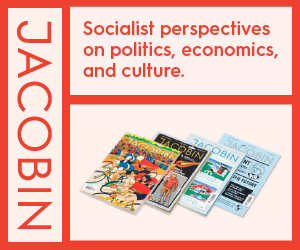Defining a space for resistance: Countering the disempowering effects of social distancing

A floor sticker recommending social distancing at a London Drugs store in Vancouver. Photo from Flickr.
In the midst of the disorienting crisis that is COVID-19, “social distancing” has taken hold as a political imperative and public health mantra in Canada and around the world. The pragmatism of this policy serves simultaneously to protect us from the risk of disease and to reduce the potential that we ourselves may act as vectors of transmission.
The logic of social distancing is compelling because it is based in science and is being promoted by trusted public health experts. The message, too, is simple: the more we isolate ourselves from others, the faster this will all be over. In other words, temporary disconnection is better for everyone.
However, there is a lurking danger in the concept of social distancing which serves to alienate people in an already atomized world. Pushing people into echo-chambers of their own solipsism is merely an extension of the way that many people live in both real and virtual worlds. In this sense, we are already socially distant—the more pressing concern is understanding the broader impacts of forced spatial distancing, especially upon society’s most vulnerable.
The intellectual roots of ‘social distance’
While it should not be confused with the public health measures we are seeing today, “social distance” is a term whose intellectual roots like in the discipline of urban sociology. The idea can be accredited largely to Robert Park, a pioneering academic notable for his work in human ecology and race relations at the University of Chicago during the 1920s and ‘30s. His theory of “urban ecology” was an influential paradigm in twentieth century urban studies. Extrapolated from plant biology, it argued that the “competition and equilibrium observed between plants provided a sufficient model for the interaction of social groups” in urban spaces. Together with his colleague and fellow sociologist Emory Bogardus, Park developed a social distance scale which rationalized physical separation based on personal preference for racial similarity (and related social activities) and an antipathy towards miscegenation. Park and Bogardus thought of racial prejudice as something natural that preserved the distance between ethnic groups while maintaining social order. In this sense, “social distance” animated the creation of physical architecture and the spaces of urban living predicated on race, or the separation of certain individuals from socially devalued groups.
In its origin, therefore, there is something insidious and deeply troubling about the concept of “social distance” and its implications for the material and ideological maintenance of human networks and the rights, responsibilities, and protections they offer.
Anti-capitalist activist and critical scholar Gary Kinsman has in recent weeks repeatedly cautioned against the use of the term “social distancing”, instead preferring to use the language of “spatial distancing”. Kinsman raises an important distinction that urges us to distinguish between geographical or physical proximity and social connection.
Kinsman’s approach is supported by the work of postcolonial feminist scholar and author Sherene Razack. She has written extensively on the ways in which space is defined and controlled by ideology, a process which divorces space from the lived experiences of the people who inhabit it. In this regard, Razack draws on established theoretical concepts of perceived, conceived, and representational space. This deconstruction of space is particularly useful in understanding responses to the COVID-19 pandemic because it allows us to use spatial distance as a lens for understanding forced reconfigurations of social relations, rather than accepting these dynamics as an axiom for daily living.
How social distancing affects the most vulnerable
What should be starkly apparent to anyone who is considering the global implications of the COVID-19 pandemic is that, unlike in Canada, other countries do not have the luxury of reconfiguring daily interactions to avoid close human contact.
In India, for example, where people are confined in sprawling urban centers (the populations of which resemble small countries rather than cities), social distancing is unfeasible in the course of daily life, and is aggravating urban food crises and prompting mass rural migration. Coupled with shortages and a lack of access to basic amenities like water, shelter, and electricity, the means of preventing disease transmission are fundamentally frustrated, while the national pandemic response is itself exacerbating the effects of economic deprivation. In other contexts, like South Africa, Stephen Lewis, the former UN Secretary-General’s Special Envoy for HIV/AIDS in Africa, has advocated for swift global action to help countries “terrifyingly at risk” of spreading the pandemic.
For many people living in the densely populated cities of the Global South, social distancing presents numerous challenges.
The response to COVID-19, despite protecting white collar workers who are able to labour from home, has magnified pre-existing cracks within our social welfare infrastructure and revealed a gaping class divide. In this context, it is instructive to analyze the social and state responses to the pandemic as a function of how we normally use space, how others are experiencing space, and how space is being reconstituted for us. Here, what should become apparent is that there is not a universal or normative way in which space is perceived. We view space based on where and how we live, and the material structures that define and control our spatial existence. These are not the same for precarious workers, migrants at risk of deportation, Indigenous nations being dispossessed of their lands, and people forced to navigate the spatial boundaries of life through the material and social confines of disability.
Looking at the pandemic response in Canada, many voices are questioning the way in which spatial distancing should be made operational. For example, people living with disabilities caution that a pandemic response must be universally accessible to all. Leading human rights advocates are urging policymakers to consider the immediate liberation of prisoners given the extraordinary risks COVID-19 poses to inmates.
Similarly, Indigenous nations throughout Canada are reminding the federal government that their communities suffer from the most appalling levels of social and economic disparity in the country as a result of the genocidal appropriation of Indigenous lands and the erasure of culture.
Housing rights groups, like the Herongate Tenant Coalition in Ottawa, are supporting a rent strike to sound the alarm on the looming impacts on tenants and those living month-to-month on a barely subsistence income.
Both locally and internationally, those familiar with the deleterious effects of criminalization of those suffering from the HIV-AIDS epidemic are calling for a balanced and proportionate response, with the understanding that those living in poverty will bear the burden of criminal sanctions. Meanwhile, leading constitutional law experts caution that there is potential for the state to normalize invasive practices that threaten our fundamental liberties.
These vital discourses must not be ignored. Not only do they serve to stem the tide of overzealous state enforcement of social distancing, but they call attention to how an equitable and just paradigm of spatial distancing should look in order to counter current systems and patterns of injustice.
Space is not a neutral zone; it is the battleground for ideological contests and the enforcement of normative patterns which dispossess rather than foster community. How do we resist against this spatial war of dispossession that is currently being redrawn under the umbrella of social distancing? In this moment of paralysis and disconnection, it is more important than ever to reach out to those in and outside of our communities to learn how spaces are being navigated. In particular, we need to listen to voices from within communities, and the advocates representing them, that are spatially dominated and marginalized by existing cultural, economic, and social frameworks.
We should not pretend to understand the spatial challenges and lived experiences of everyone in Canada, but we must use this moment to better acquaint ourselves with and question the oppressive dynamics of spatial control that lie in the balance.
As government responses in countries across the globe form common cause around the strangely disempowering concept of social distancing, there is strength in exploring and resisting the perpetuation of oppressive modes of spatial control that fuel the current crisis.
Yavar Hameed is an Ottawa-based human rights lawyer and sessional lecturer at Carleton University’s Department of Law and Legal Studies. Follow him on Twitter or send him an email.










